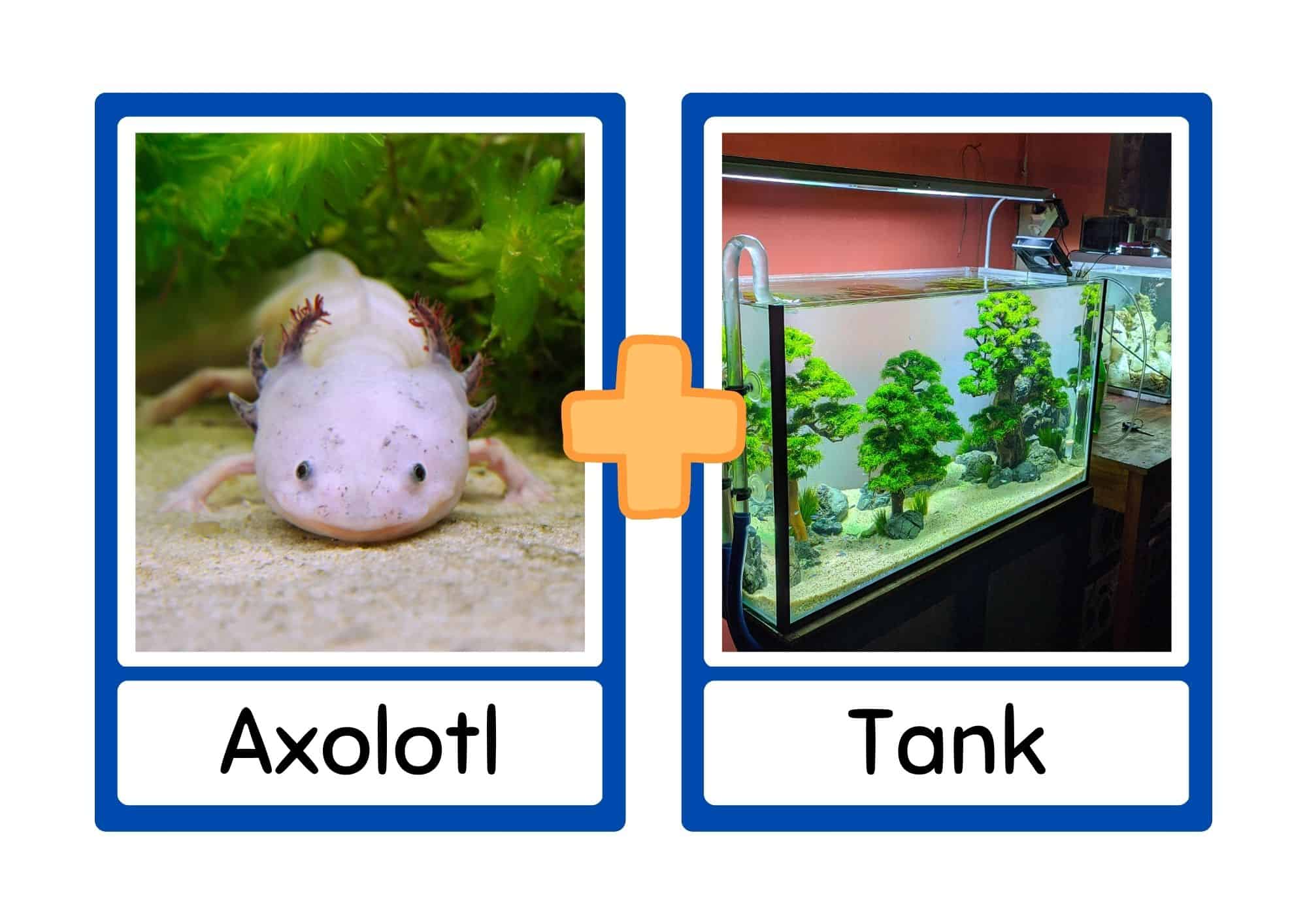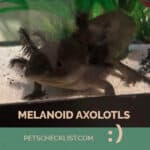Are you considering getting an axolotl as a pet? These aquatic creatures are fascinating and unique, but they also require specific care to thrive. One of the most important aspects of axolotl care is providing a suitable habitat for them. In this article, we’ll provide you with a comprehensive guide for creating the perfect habitat for your axolotl.
First, let’s start with some background on axolotls. These creatures are a type of salamander that originates from Mexico. They are known for their regenerative abilities, as they can regrow limbs and even parts of their spinal cord. Axolotls are becoming increasingly popular as pets due to their unique appearance and ease of care.
However, it’s important to note that creating the best habitat for your axolotl is crucial for their health and happiness. Let’s explore the different components of creating a great axolotl habitat.
Table of Contents
Tank Size and Shape
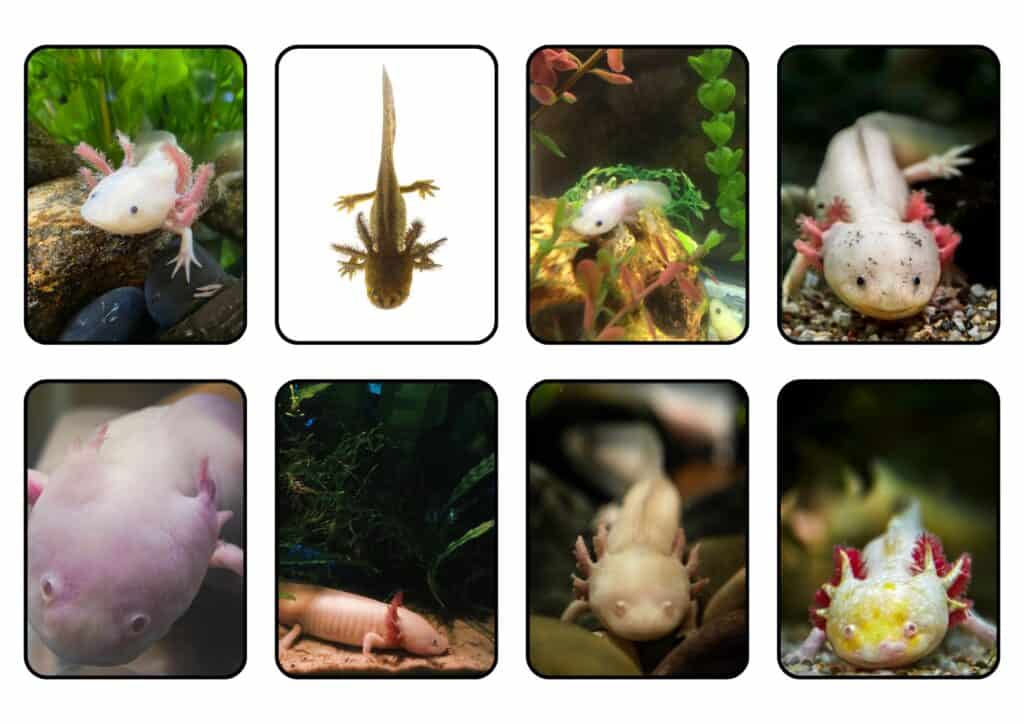
Axolotls require a minimum tank size of 20 gallons, but bigger is always better when it comes to their habitat. They are quite active and need ample space to swim around. The ideal tank shape for axolotls is long and wide rather than tall, as they prefer to swim near the bottom of the tank. When selecting the size and shape of your tank, consider the material it’s made of, as some materials can harm your axolotl’s delicate skin.
When choosing a tank for your axolotl, it’s important to consider the size and shape of the tank. Axolotls are aquatic animals and require plenty of space to swim around and explore. The minimum tank size requirement for one axolotl is 20 gallons, but it’s recommended to go for at least 30 gallons to provide enough swimming space. If you plan on keeping multiple axolotls, you should add 10 gallons for each additional axolotl.
The shape of the tank is equally important. Axolotls prefer long, shallow tanks with a large surface area. This allows them to swim and explore their environment easily. A rectangular tank is the best shape for axolotls because it provides the most swimming space. Additionally, it’s recommended to avoid tall tanks as they don’t provide enough swimming space and can lead to stress and injury for the axolotl.
Minimum Tank Size Requirements
Axolotls are active and curious creatures that need a lot of space to swim and explore. It’s important to give your pet axolotl enough room to grow and live a happy life. The minimum tank size requirement for one axolotl is 20 gallons. However, it’s important to note that this is the bare minimum and not ideal for the long-term health and well-being of your axolotl.
If you want to provide your axolotl with the best possible environment, it’s recommended to go for at least a 30-gallon tank. This will give your pet plenty of room to swim around and explore their habitat. If you plan on keeping multiple axolotls, make sure to add 10 gallons for each additional axolotl.
Ideal Tank Shape for Axolotls
In addition to size, the shape of the tank is also important for axolotls. As mentioned earlier, axolotls prefer long, shallow tanks with a large surface area. This allows them to swim and explore their environment easily.
A rectangular tank is the best shape for axolotls because it provides the most swimming space. Additionally, it’s recommended to avoid tall tanks as they don’t provide enough swimming space and can lead to stress and injury for the axolotl.
When choosing the shape of the tank, it’s important to consider the size of your axolotl as well. Axolotls can grow up to 18 inches in length, so make sure the tank is long enough to accommodate their full size. Make sure the tank is wide enough to allow your axolotl to turn around comfortably.
Factors to Consider When Choosing a Tank for Axolotls
When choosing a tank for your axolotl, there are several factors you should consider. First and foremost, make sure the tank is made of a high-quality material that won’t leak or crack. Glass or acrylic tanks are the most popular choices for axolotls as they’re easy to clean and maintain.
It’s also important to ensure that the tank has no sharp edges or corners that could injure your axolotl. Additionally, ensure the tank has a lid to prevent your axolotl from jumping out.
Water Quality
Maintaining good water quality is essential for the health of your axolotl. Axolotls are sensitive to water conditions, so it’s important to monitor the water parameters in their tank regularly. Keep the water temperature between 60-68°F and maintain a pH level of 6.5-8.0. Additionally, use a de-chlorinator to remove any harmful chemicals from the water.
Methods For Maintaining Water Quality
Maintaining a healthy aquatic environment for your axolotl requires diligence and consistency. One of the most important things you can do is regularly clean your axolotl’s tank. This means changing out a portion of the water and scrubbing the tank to remove any algae or debris. Doing this once a week will help keep the water fresh and clean, reducing the risk of harmful bacteria or parasites growing.
Another key method for maintaining best axolotl water quality is to use a high-quality filtration system. Filters help remove waste and debris from the water, keeping it clean and clear. A good filter will also help regulate the water’s pH and prevent harmful substances from building up in the tank. Be sure to choose a filter that is appropriate for the size of your axolotl’s tank and follow the manufacturer’s instructions for cleaning and maintenance.
Water Parameters For Axolotls
To ensure your axolotl’s water quality is optimal, you must monitor and maintain several water parameters. One of the most critical factors is the temperature of the water. Axolotls are cold-blooded animals, and they require specific water temperatures to thrive. As mentioned earlier, the ideal temperature for axolotls is between 60-64°F (16-18°C). Be sure to use a high-quality thermometer to monitor the water temperature regularly.
Another important water parameter to monitor is pH levels. Axolotls prefer a pH range of 7.4-7.6. A pH that is too low or too high can be harmful to your axolotl’s health, causing irritation and stress. It’s also essential to monitor ammonia, nitrite, and nitrate levels in your axolotl’s tank. These substances can be harmful to your axolotl if they reach high levels. You can use a water testing kit to monitor these levels and adjust as needed.
Importance Of Water Quality For Axolotls
Axolotls are aquatic animals that rely entirely on their aquatic environment to survive. Poor water quality can lead to various health issues, including skin irritation, bacterial infections, and even death. By maintaining the best axolotl water quality, you can ensure your axolotl remains healthy and happy.
In addition to keeping your axolotl healthy, maintaining proper water quality is also essential to promote their well-being. Axolotls are sensitive creatures that can become stressed in poor water conditions. Stress can lead to a weakened immune system, making them more susceptible to illness. Therefore, ensuring your axolotl’s water quality is optimal is crucial to their overall health and well-being.
Lighting and Temperature
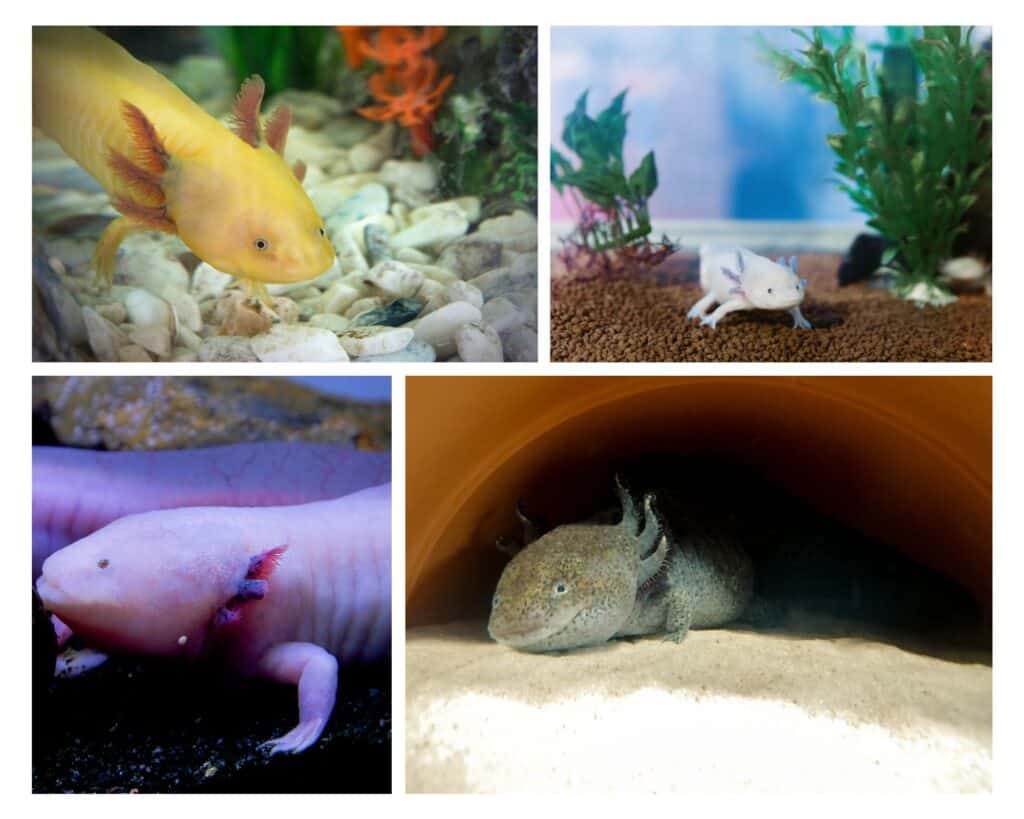
Axolotls require a specific lighting and temperature set-up to thrive. They need a light cycle of 12 hours on and 12 hours off, and it’s important to avoid exposing them to direct sunlight. Use a heater to maintain the ideal water temperature range of 60-68°F.
Ideal Temperature Range For Axolotls
Axolotls are fascinating creatures that require specific living conditions to thrive. One of the most important factors in their care is maintaining the right temperature in their tank. Axolotls are cold-blooded, which means that they can’t regulate their own body temperature, so it’s up to their environment to do that for them.
The ideal temperature range for axolotls is between 16°C to 18°C (60°F to 64°F). If the temperature drops below this range, axolotls become sluggish and less active. If the temperature is too high, it can cause stress and even death.
It’s important to note that axolotls prefer cooler temperatures than other amphibians, so keeping their tank in a cool room or using a chiller may be necessary to maintain the ideal temperature range. A thermometer should always be used to monitor the water temperature, and a reliable heater should be used to keep the water temperature stable.
Importance Of Proper Lighting For Axolotls
Proper lighting is essential for the health and well-being of axolotls. While they don’t need UVB lighting, they do require a consistent light-dark cycle to help regulate their circadian rhythms.
Axolotls are most active at night, so a low-level light source should be provided during the day. Too much light can cause stress and disrupt their natural behavior, so it’s important to strike a balance.
Additionally, lighting can impact the growth and health of plants in the axolotl’s tank, which in turn can provide additional oxygen and filtration benefits to the water. Plants can also create hiding spots and areas for the axolotl to explore, which can help to reduce stress and encourage natural behavior.
Recommended Lighting And Temperature Set-Up For Axolotls
To provide the best habitat for your axolotl, it’s recommended to use a combination of a reliable heater and thermometer to maintain the ideal temperature range of 16°C to 18°C (60°F to 64°F).
As for lighting, a low-level light source should be provided during the day, with a timer set for a consistent light-dark cycle. It’s important to avoid direct sunlight and harsh lighting, which can cause stress and disrupt natural behavior.
As for plants, it’s recommended to choose species that can thrive in cooler water temperatures, such as java fern, anubias, or java moss. These plants can provide oxygen and filtration benefits, as well as creating hiding spots and areas for the axolotl to explore. By providing the best lighting and temperature set-up, you can help your axolotl thrive and live a happy and healthy life.
Substrate and Decorations
Axolotls require a soft substrate that won’t harm their delicate skin. Sand, fine gravel, or bare-bottom tanks are all suitable options. When it comes to decorations, choose items that won’t harm your axolotl or damage their skin, such as live plants or non-toxic decorations.
Importance Of Substrate For Axolotls
The substrate is not just for aesthetics; it also helps to create a natural environment for your axolotl. It provides a surface for good bacteria to grow, which helps to maintain the tank’s nitrogen cycle. This cycle is essential for your axolotl’s health, as it converts harmful ammonia into nitrate, which is less harmful.
The substrate also provides a surface for your axolotl to move around and helps to prevent any injuries to its soft underbelly.
Additionally, the substrate can also aid in maintaining the right water parameters by providing a place for beneficial microorganisms to grow.
Types Of Substrate Suitable For Axolotls
Choosing the right type of substrate is crucial for your axolotl’s health. Some of the most commonly used substrates for axolotls are sand, gravel, and bare bottom tanks.
Sand is a popular choice because it is easy to clean and maintain, and it does not harbor any harmful bacteria. Gravel is another common substrate, but it is important to choose a type that is not too small, as axolotls can accidentally ingest it while feeding.
Bare bottom tanks are also an option, but they may not provide enough surface area for good bacteria to grow. It is important to research and choose the right substrate for your axolotl, depending on their age and size.
Recommended Decorations For Axolotls
While decorating your axolotl’s tank, it is important to keep in mind that they are sensitive to bright light and sudden movements.
It is best to choose decorations that are natural-looking and provide hiding places for your axolotl. Some recommended decorations include live plants, artificial plants, and hides.
Live plants not only look great, but they also provide oxygen and help to maintain the nitrogen cycle. Artificial plants are another option, and they are easy to clean and maintain. Hides, such as clay pots or PVC pipes, provide a safe place for your axolotl to rest and hide.
Filtration and Maintenance
Axolotls are messy creatures, so a good filtration system is necessary to keep their tank clean. Choose a filter that’s appropriate for the size of your tank and clean it regularly. Additionally, perform water changes every week to maintain good water quality.
Types Of Filtration Systems Suitable For Axolotls
Axolotls require a filtration system that provides both mechanical and biological filtration. Mechanical filtration removes debris, uneaten food, and other waste from the water.
Biological filtration supports the growth of beneficial bacteria that break down harmful chemicals in the water. The most suitable types of filtration systems for axolotls are canister filters, sponge filters, and hang-on-back filters.
Canister filters provide excellent mechanical filtration and are easy to clean, making them a popular choice among axolotl owners. Sponge filters are also effective, as they provide both mechanical and biological filtration, and their gentle water flow is perfect for axolotls. Hang-on-back filters are great for smaller tanks and can provide adequate filtration for one or two axolotls.
Recommended Maintenance Schedule For Axolotl Tanks
Regular maintenance of your axolotl’s tank is essential to keep the water clean and safe. A maintenance schedule for your axolotl tank should include the following tasks:
- Test the water quality regularly using a water testing kit to ensure that the pH, ammonia, nitrite, and nitrate levels are within safe levels.
- Clean the filter and replace any filter media according to the manufacturer’s instructions. Aim to clean the filter at least once a month.
- Remove any uneaten food or debris from the bottom of the tank using a siphon.
- Clean the tank’s walls and decorations to prevent the build-up of algae and bacteria. Aim to clean the tank every two weeks.
Water Changing Frequency And Volume
Axolotls produce a significant amount of waste, which can quickly accumulate in their tanks. Regular water changes are necessary to keep the water clean and healthy. The recommended water changing frequency for axolotls is 25-50% of the tank volume once a week.
For example, if you have a 20-gallon tank, you should aim to change 5-10 gallons of water every week. It’s important to use a de-chlorinator when adding fresh water to the tank to remove any harmful chemicals that may be present in tap water.
By using the appropriate filtration system, following a regular maintenance schedule, and performing regular water changes, you can ensure your axolotl has a perfect environment to thrive in.
Feeding and Health
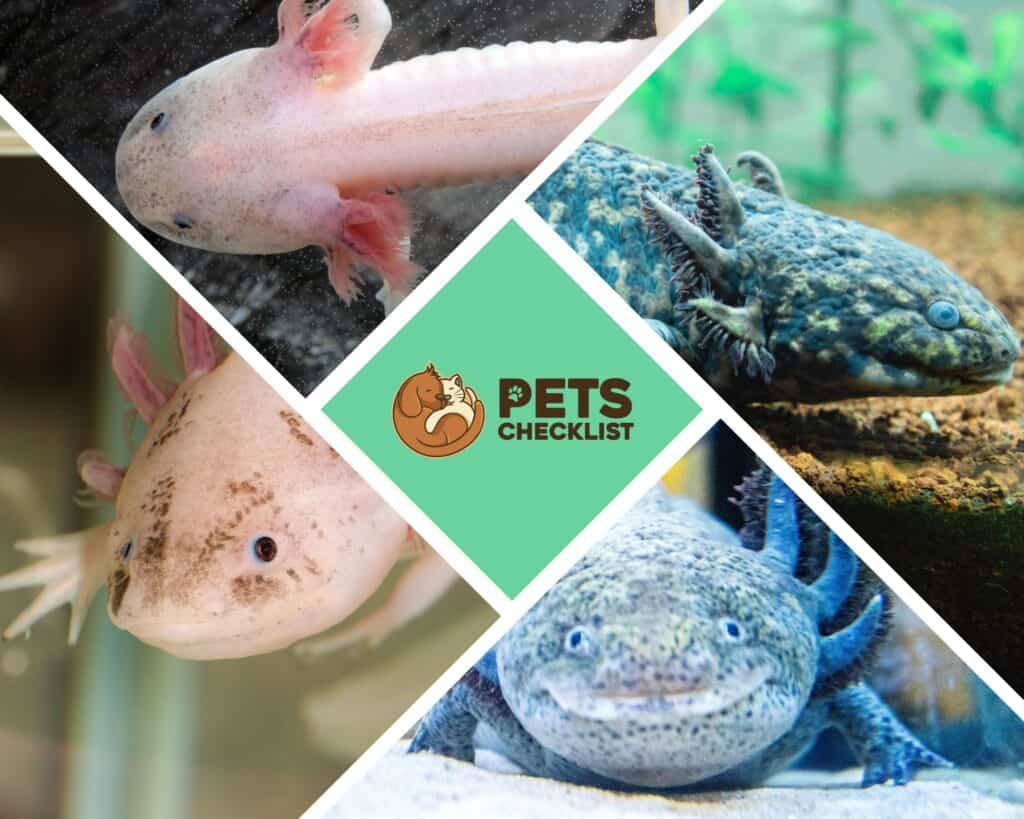
Axolotls are carnivorous and require a diet that’s high in protein. Feed them a variety of live or frozen foods such as bloodworms, brine shrimp, or earthworms. Be mindful of overfeeding, as this can lead to health issues such as obesity.
It’s important to monitor your axolotl’s health regularly. Look out for signs of stress or illness such as abnormal swimming patterns, lack of appetite, or lethargy. If you notice any concerning symptoms, consult with a veterinarian who specializes in exotic pets.
Conclusion
In conclusion, creating the perfect habitat for your axolotl is crucial for their health and happiness. By following these guidelines for tank size and shape, water quality, lighting and temperature, substrate and decorations, filtration, maintenance, and feeding and health, you can provide the best possible home for your axolotl.
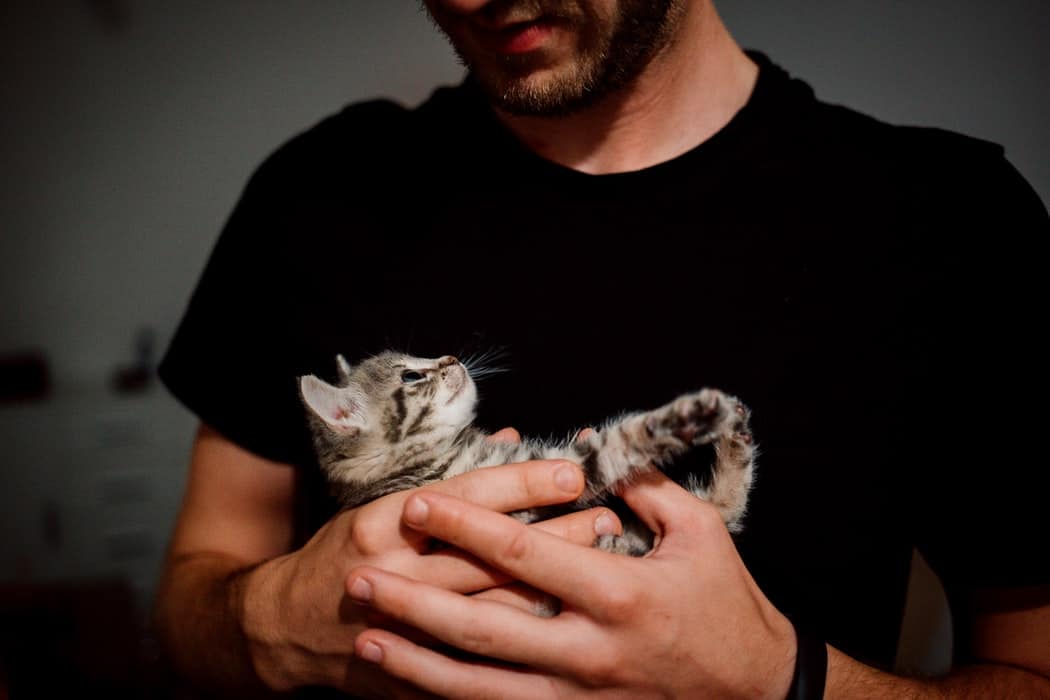
Hezekiah is a pet lover since birth, according to his parents. He started writing for the Pets Checklist in 2020. He is fond of playing with and taking pictures of different friendly animals around his neighborhood. He loves to read and write articles about pets, science, and music.

